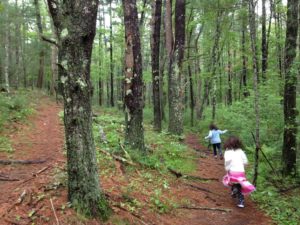(Note: This article was originally published in October 2013, but was inadvertently left out of this blog.)
For years I have avoided Duxbury’s North Hill Marsh because on my first visit, more than a decade ago, I got lost.
When visiting a conservation area that is new to you, it is always wise to consult a map, and even wiser still to bring a map along. I did that on my second visit to North Hill Marsh, and I enjoyed the walk immensely. Even after 90 minutes I found there was plenty more to explore, so I will definitely be going back.
Located on Mayflower Street, the North Hill Marsh Wildlife Sanctuary is managed by both Mass Audubon and Duxbury Conservation. The town owns 823 acres of pine/oak woods and wetlands, while Audubon oversees another 30 acres of upland, plus 90 acres of reservoir and marsh. Together they provide an ideal location for walking, birding and wildlife observation.
A map of the property is available online. Its sidebars offer a quick history of the land, as well as an overview of the wildlife present there.
I learned from the map that the reservoir at the center of North Hill Sanctuary – as well as the freshwater marsh that surrounds it – was created centuries ago, when the town’s early European inhabitants dammed a brook to power a sawmill and provide water to farms nearby. In the 1920s, ownership transferred to a group of sportsmen, who used the area for duck hunting. A second dam, constructed in 1940 as part of a cranberry growing operation, raised the water level in the pond even more. Mass Audubon now maintains the property as wildlife habitat, thus dead trees are left standing (or lying down, as the case may be), to encourage waterfowl to feed and breed. You might see osprey at North Hill Marsh, as well as great blue heron, black-crowned night heron, great horned owl, red-tailed hawks, and any number of geese and ducks.
The shallow edges of the pond are an ideal location for spotting salamanders, frogs, and turtles, and in the warmer months, there are plenty of dragonflies and damselflies. The small mammals so common to our region – squirrels, chipmunks, mice, raccoons, opossums — are joined at North Hill by water-loving muskrats, mink, otters, plus coyote and deer, although many of these you are unlikely to spot in broad daylight.
A well-marked Loop Trail extends all the way around the pond, closely hugging the shoreline in many places. Portions are flat, but some of the trail involves elevation, so it can be a satisfying hike for those hoping to get the heart pumping. There is also a shorter loop through the woods, plus a path than runs more or less parallel to Mayflower Street, through the Frederick B. Knapp Town Forest, which is comprised primarily of tall pines. Additional spur trails connect the property to West Street and Tremont. Visiting the Waiting Hill Preserve, in the northern quadrant of the property, involves a climb to the top of the town’s second-largest hill, which stands at 140 feet above sea level. Alas, trees obscure what otherwise would be a broad view of Duxbury Bay.
North Hill Marsh welcomes visitors daily from dawn to dusk. Boating, fishing, hunting and trapping are not permitted, nor are motorized vehicles. Dogs must be kept under control at all times.
Follow this link for a map and property guide.
http://www.town.duxbury.ma.us/public_documents/DuxburyMA_Conservation/ConAreas/North%20Hill%2027%20Oct.pdf
by Kezia Bacon
October 2013
Kezia Bacon’s articles appear courtesy of the North and South Rivers Watershed Association, a local non-profit organization devoted to the preservation, restoration, maintenance and conservation of the North and South Rivers and their watershed. For membership information and a copy of their latest newsletter, contact NSRWA at (781) 659-8168 or visit www.nsrwa.org. To browse 15 years of Nature (Human and Otherwise) columns, visit http://keziabaconbernstein.blogspot.com


